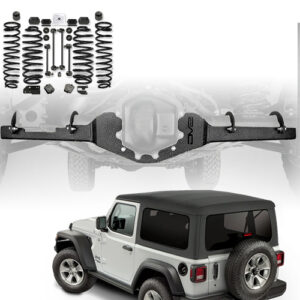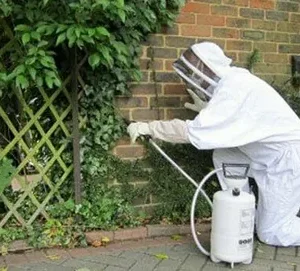When buying a new car or even just giving your older ride some love paint protection often enters the conversation. Whether bundled with car paint correction services or sold separately by dealerships, detailers, and online stores, it promises everything from high-gloss shine to armor-like defense against the elements. But is car paint protection truly worth it, or is it just another upsell?
As a car enthusiast and a realist, I’ve researched, tested, and talked with experts to help you decide whether paint protection is a wise investment or a fancy way to spend extra cash.
What Is Car Paint Protection?
Paint protection refers to various methods and products applied to a vehicle’s exterior to shield the paint from damage caused by:
UV rays
Acid rain
Bird droppings
Tree sap
Road salt and grime
Scratches and swirl marks
There are generally three main types of paint protection:
1. Wax and Sealants
These are the most basic forms of protection. Affordable and easy to apply, wax creates a thin barrier that enhances shine and water resistance. Synthetic sealants last longer than natural wax, typically up to six months.
2. Ceramic Coatings
Ceramic coatings use nanotechnology to bond to your car’s paint and provide a hydrophobic, chemically resistant surface. They offer a deeper gloss and can last several years with proper maintenance.
3. Paint Protection Film (PPF)
Also known as “clear bra,” PPF is a thermoplastic urethane film applied to high-impact areas like the hood, bumper, and fenders. It’s the most durable option and offers actual impact protection against road debris.
Why Consider Paint Protection?
Every car owner has different goals. Some keep cars for a few years; others hold onto them for decades. Here are several reasons you might consider paint protection:
1. Preserve Resale Value
A well-maintained exterior boosts resale value. Dull, chipped, or scratched paint can knock hundreds or even thousands off your trade-in or sale price.
2. Protect Against the Environment
Sunlight, bird droppings, and pollution are all enemies of your paint job. UV rays, in particular, can oxidize and fade paint over time.
3. Save Time on Maintenance
Many paint protection products make it easier to wash your car. Ceramic coatings and PPF are especially effective at repelling dirt and water, which means fewer washes and less elbow grease.
4. Enhanced Aesthetics
There’s nothing like a car that gleams under the sun. A good protective coating enhances gloss, depth, and color vibrancy.
But Is It Worth the Cost?
Let’s break it down by type:
Wax/Sealant: $20–$150
Lifespan: 1–6 months
Pros: Inexpensive, DIY-friendly
Cons: Requires frequent reapplication
Worth it?: Yes for short-term protection and budget-conscious owners.
Ceramic Coating: $400–$2,000
Lifespan: 2–5 years
Pros: Long-lasting, great shine, excellent chemical resistance
Cons: Expensive, requires prep and professional application for best results
Worth it?: Yes especially for newer vehicles, luxury models, or enthusiasts.
Paint Protection Film: $1,000–$5,000
Lifespan: 5–10 years
Pros: Best physical protection (chips, scratches)
Cons: Most expensive option, not entirely invisible
Worth it?: Yes if you drive a high-end vehicle or care about long-term preservation.
The Downsides You Should Know
No product is magic. Here’s what to be aware of:
Maintenance Still Matters: Even ceramic-coated cars need to be washed properly. Letting grime accumulate can reduce effectiveness.
Cost and Quality Vary: Some shops charge premium prices but cut corners. Do your homework on installers and materials.
Fading Expectations: Paint protection helps, but it won’t prevent all scratches or damage. It reduces risk not eliminates it.
DIY vs Professional Application
If you’re handy, applying a wax or basic sealant can be a weekend project. However, ceramic coatings and PPF should typically be left to professionals. Why?
Proper surface prep is critical. Even minor scratches or contaminants trapped under a ceramic coating will be magnified.
DIY kits are cheaper but often less durable and harder to apply evenly.
Reputable detailers often offer warranties and professional-grade products unavailable to consumers.
So Is It Worth It? Final Verdict
In most cases, yes, car paint protection is worth the investment but only if you choose the right type for your needs and expectations.
If you drive a $3,000 beater and wash it once a year, don’t waste money on high-end protection. But if you value your car’s appearance, plan to keep it long-term, or want to protect your investment, quality paint protection is one of the smartest ways to do it.
Ultimately, think of paint protection like insurance. You hope you won’t need it, but you’re glad it’s there when bird droppings or highway pebbles strike.
Final Tips Before You Buy
Ask questions about product types, prep work, and warranties before you commit.
Read reviews of local installers or detailing shops.
Balance the cost with the car’s value and how long you plan to keep it.
Whether you’re looking to preserve the showroom shine or shield your vehicle from daily wear and tear, the right paint protection can give you peace of mind and a better-looking car for years to come. If you’re considering Paint Correction Oakville professionals, pairing their expertise with a durable protection plan is a smart way to safeguard your vehicle’s finish.





